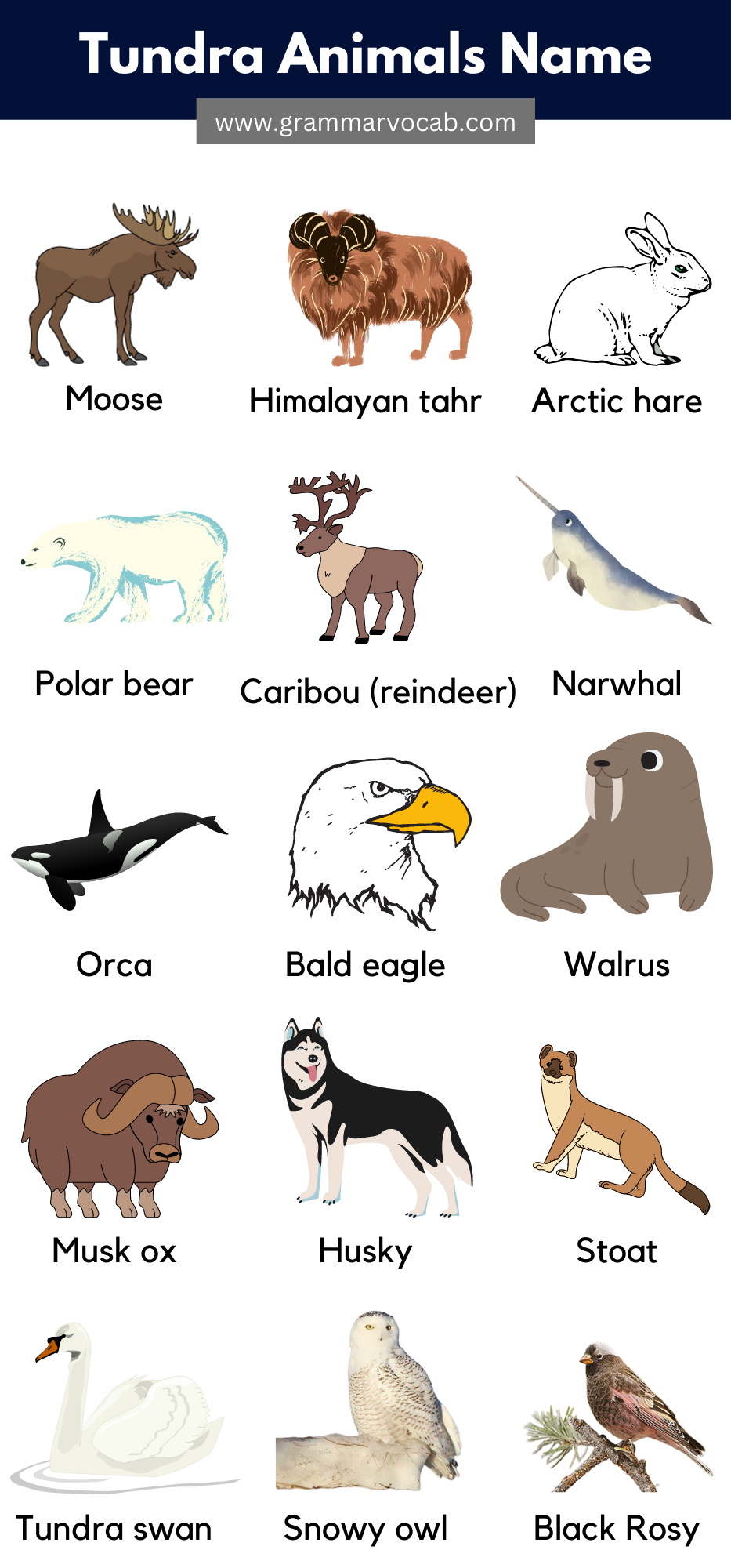The tundra biome is a vast, treeless region found in the Arctic and alpine regions of the world. It is characterized by extremely cold temperatures, permafrost (permanently frozen ground), and a short growing season. Despite its harsh conditions, the tundra is home to a variety of unique animal species that have adapted to survive in this challenging environment.
Tundra Animals List
- Lemming
- Moose
- Himalayan tahr
- Arctic hare
- Weddell seal
- Polar bear
- Caribou (reindeer)
- Antarctic prion
- Arctic dog
- Narwhal
- Orca
- Arctic tern
- Bald eagle
- Snow leopard
- Walrus
- Yellow-eyed penguin
- Musk ox
- Mountain goat
- Kea (parrot)
- Arctic fox
- Yak
- Puffin
- Molt
- Red fox
- Polar bear
- Snow petrel
- Pika
- kea
- Husky
- Reindeer
- Stoat
- Harbor seal
- Elk
- Caribou
- Beluga whale
- Cape petrel
- Arctic wolf
- Antarctic penguin
- Chinchilla
- Marmot
- Tundra swan
- Snowy owl
- Rock ptarmigan
Tundra Animals with Facts
Here are some examples of animals that inhabit the tundra, along with interesting facts about them:
Polar Bear:
- The polar bear is the largest land predator on Earth.
- Their white fur helps them blend in with the snowy tundra.
- They are excellent swimmers and can cover long distances in search of food.
- Polar bears have a layer of blubber that keeps them insulated in the cold Arctic climate.
- They primarily feed on seals, and their diet consists mainly of fat.
Arctic Fox:
- Arctic foxes have thick, fluffy coat that changes color with the seasons, ranging from white in winter to brown or gray in summer.
- They have a keen sense of hearing, which helps them locate prey beneath the snow.
- Arctic foxes can survive in extremely cold temperatures, as low as -58°F (-50°C).
- They are well-adapted to their environment and have a compact body shape and short muzzle to minimize heat loss.
Reindeer (Caribou):
- Reindeer are native to the tundra and have adaptations that allow them to withstand harsh conditions.
- Both male and female reindeer grow antlers, which help them dig for food in the snow and fight for dominance during mating season.
- They undertake long migrations, traveling hundreds of miles in search of food and to avoid predators.
- Reindeer have specialized hooves that act like snowshoes, enabling them to walk on snow without sinking.
Musk Ox:
- Musk oxen have a thick coat of long hair that protects them from the cold.
- They form tight-knit herds, with adults surrounding the young for protection against predators.
- When threatened, musk oxen will form a defensive circle around their young, facing outward to deter predators.
- Their name comes from the strong musky odor that adult males emit during the breeding season.
Snowy Owl:
- Snowy owls are well-adapted to the tundra environment and have dense feathers that provide insulation.
- They have excellent vision and can spot prey from great distances.
- Snowy owls are primarily diurnal, meaning they are active during the day.
- They have a unique hunting strategy, using their keen sense of hearing to detect prey beneath the snow and then swooping down to catch it.
Must Try:
Taiga Animals List, Facts, and Pictures
All Farm Animals List & Pictures
Pet Animals List in English
Masculine and Feminine Gender of Animals list
Tundra Animals Name with Pictures




